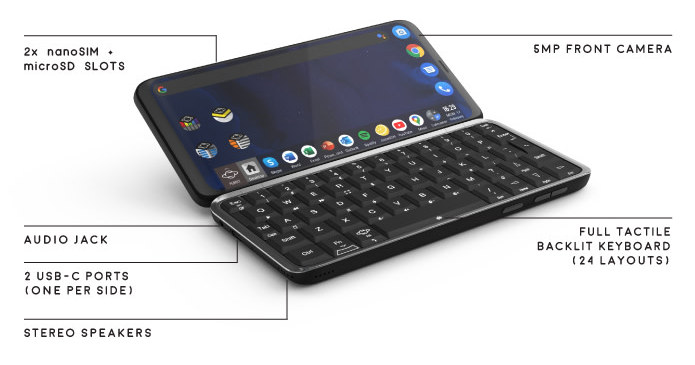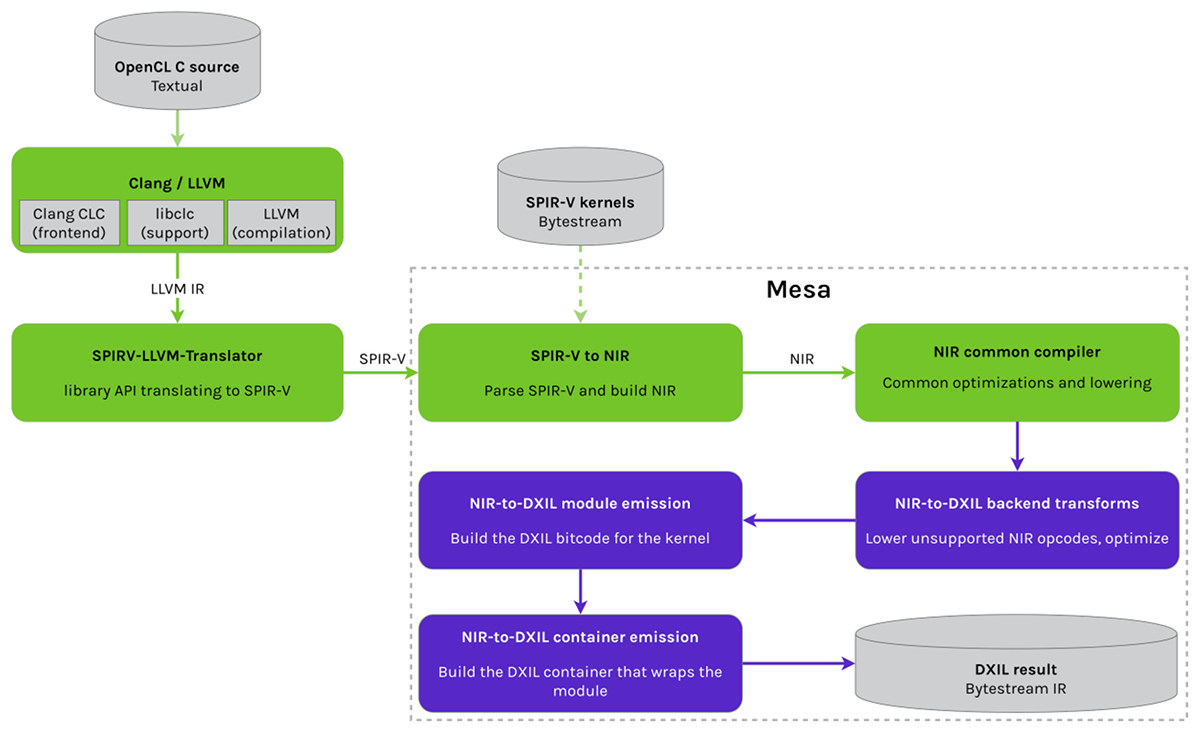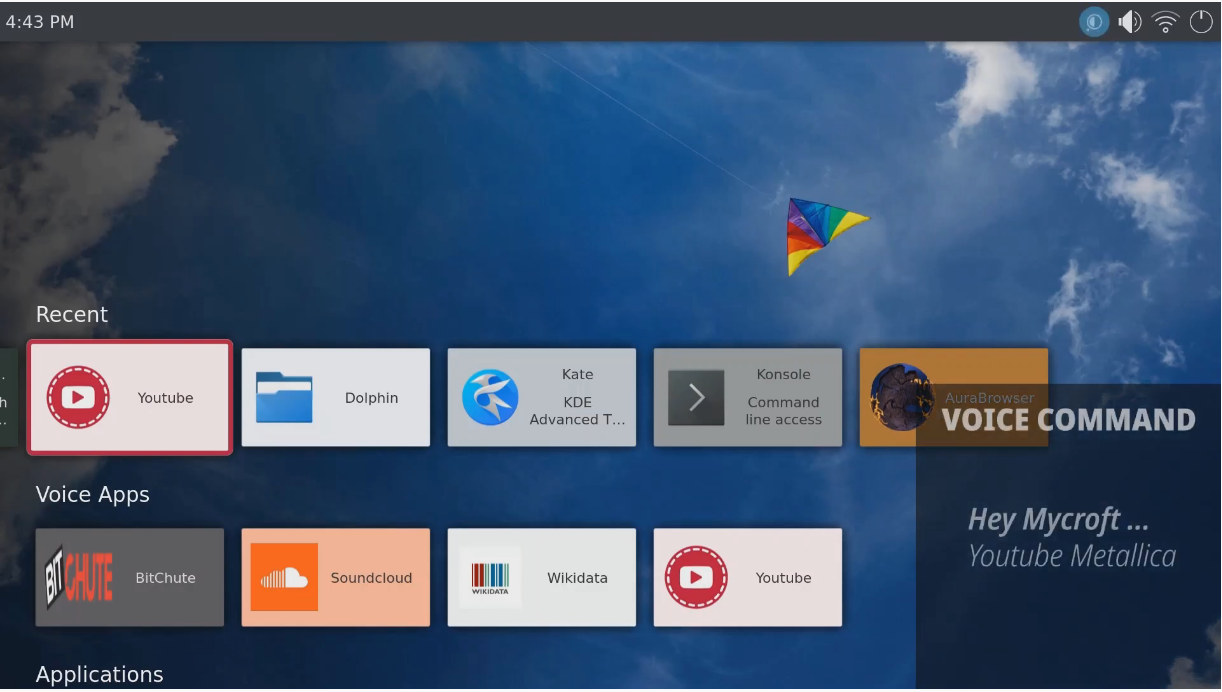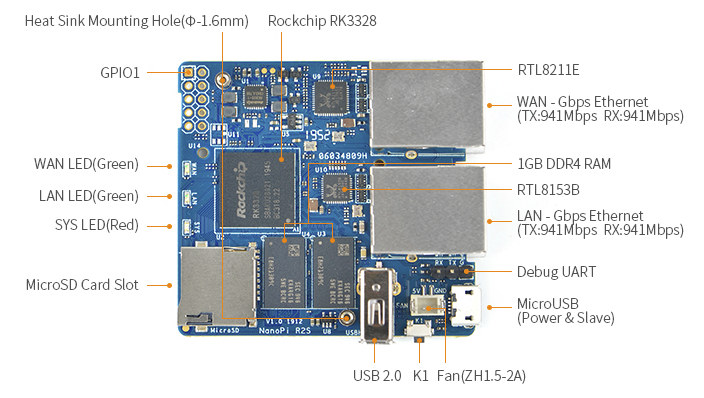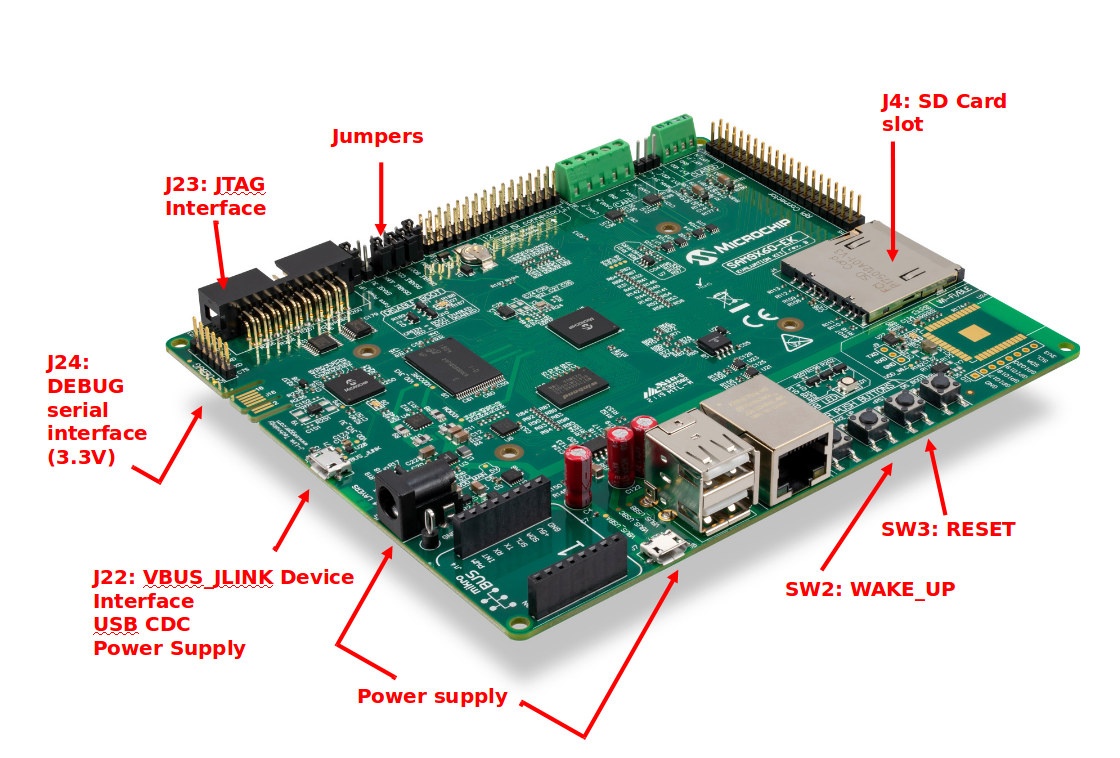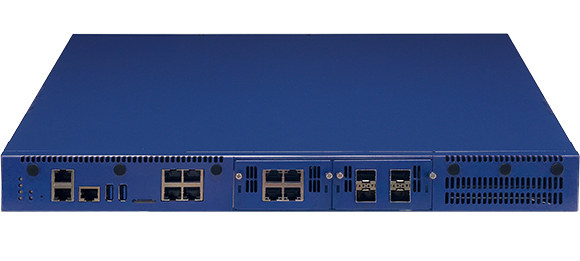Planet Computers has introduced several smartphones with physical keyboards over the last few years including Gemini PDA and Cosmo Communicator with the later recently received its promised Debian Linux images besides just running Android 9.0. The company is now back with the new model. Powered by a MediaTek Dimensity 1000 processor, Astro Slide 5G Transformer supports 5G connectivity and comes with a slide-out keyboard following on the steps of the company’s previous smartphones. Astro Slide 5G Transformer preliminary hardware specifications: SoC- MediaTek Dimensity 1000 (MT6889)octa-core processor with 4x Arm Cortex-A77 cores @ 2.6 GHz, 4x Arm Cortex-A55 CPU efficient cores @ 2.0 GHz, Arm Mali-G77 GPU, 4.5 TOPS APU 3.0 AI accelerator / NPU System Memory – At least 6GB LPDD4x RAM Storage – 128 GB flash, MicroSD card slot Display – 6.53″ touchscreen display with 2340×1080 resolution, scratch-resistant glass Camera – 48MP rear camera with flash, 5.0MP front-facing camera […]
Collabora & Microsoft to Bring OpenCL 1.2 and OpenGL 3.3 to DirectX 12 enabled Windows Devices
Collabora has been working on open-source graphics projects for a while, including Panfrost open-source drivers for Arm Midgard and Bitfrost GPUs which got experimental OpenGL ES 3.0 support earlier this year. But the company has also been working with Microsoft in order to provide an OpenCL 1.2 & OpenGL 3.3 translation layer for Windows devices compatible with DirectX 12. Their solution relies on Mesa 3D OpenCL and OpenGL open-source implementation with three main components: an OpenCL compiler using LLVM and the SPIRV-LLVM-Translator to generate SPIR-V representations of OpenCL kernels. The data goes through an SPIR-V to NIR translator (NIR is Mesa’s internal representation for GPU shaders), and finally to NIR-to-DXIL generating a DXIL compute shader and metadata understood by DirectX 12 (D3D12) a custom OpenCL runtime to do a direct translation of DirectX 12 (Not based on Mesa Clover implementation) a Gallium driver that builds and executes command-buffers on the […]
KDE Plasma Bigscreen for TVs and TV Boxes Offers a Linux Alternative to Android TV
KDE Plasma is a desktop environment initially developed for Linux Desktop PC or SBCs, but that’s also available on Linux phones with Plasma Mobile (previously known as Plasma Active). The developers have now decided to work on a version for the big screens with Plasma Bigscreen suitable for TVs and TV boxes and offering an open-source, Linux-based alternative o Android TV. Plasma Bigscreen is community supported, completely free and open-source, and offers an interface fairly similar to Android TV launcher. It is optimized for IR remote control use including (experimental) CEC support, as well as voice control through MyCroft open-source AI & voice assistant and Bluetooth or RF remotes with a built-in microphone such as WeChip G20 or W2, or a USB microphone. By default, Plasmas Bigscreen connects to Mycroft’s Home server, which uses Google’s STT (Speech to text) sending anonymized utterances to Google, but it’s also possible to switch […]
Onyx Boox Nova 2 7.8″ eReader Runs Android 9.0
We wrote about reMarkable 2 10.3″ e-Paper Tablet running Linux a few days ago, but there’s now another option with Onyx Boox Nova 2 eReader equipped with a 7.8″ display and running an operating system based on Android 9.0. The device comes with an unnamed octa-core processor coupled with 3GB RAM, 32GB storage, support for Wacom pen and touch input, and a 3,150 mAh battery. Onyx Boox Nova 2 specifications: SoC – Unnamed octa-core processor @ 2.0 GHz, but likely Qualcomm Snapdragon 625 found in the company’s Boox Max 3 eReader. System Memory – 3GB RAM Storage – 32GB flash, MicroSD card reader Display – 7.8″ E Ink Carta Plus inductive Wacom + capacitive touch screen with 1872×1404 resolution, 16 shades of grey, and the SNOW Field function to reduce artifacts during a partial refresh Frontlight – MOON Light 2 to use the device in the dark or under poor […]
NanoPi R2S Dual GbE IoT Board and Gateway Launched for $22 and Up
We first covered NanoPi R2S SBC back in mid-January 2020. Specifically designed for headless and IoT application the board features a Rockchip RK3328 processor combined with 1GB RAM, and contrary to most competing platforms on the market such as Orange Pi R1 or NanoPi R1S, R2S comes with two true Gigabit Ethernet ports. At the time, the board was not available for sale, but now FriendlyELEC has started to take orders for just $22.00, and adding a yellow case adds $3 to the total. This is around $5 extra compared to NanoPi R1S gateway which was expected with extra RAM (1GB) and true dual GbE connectivity. But in the age of COVID-19, nothing runs quite as smoothly as it used to and the company expects shipping delays: Because of the epidemic, postal services in a lot of countries get delayed. Customers who need orders urgently need to choose DHL. EU […]
ARM9 in 2020 – Meet Microchip SAM9X60 SoC & Evaluation Kit
In my first job, I wrote code for a MIPS processor for VoIP phones, then I switched to NEC/Renesas MCUs for CD and DVD players, before going back to Linux and my first experience with an Arm processor: Cirrus Logic EP9307 with a single ARM9 (ARM920T) core clocked at 200 MHz. That was in 2005, and according to Wikipedia various ARM9 cores were released between 1998 to 2006, and now such cores are not recommended for new IC designs with most companies now building their chips around Arm Cortex-A/M/R cores. At the end of last year, we wrote about Banana Pi BPI-F2S SBC based on Sunplus SP7021 “Plus1” quad-core Cortex-A7 processor with ARM9 and 8051 co-processor. Odd enough but at least the ARM9 core is not the main processor, however, while looking at the upcoming Linux 5.6 Linux kernel log I read an entry about a new SAM9X60 ARM926-based SoC […]
NXP LX2160A based NSA 6310 uCPE Runs Ubuntu, Supports up to 25Gbps Ethernet
NXP QorIQ LayerScape LX2160A networking processor with 16 Cortex-A72 cores, 16 Ethernet interfaces with support for up to 100GbE connectivity, 4 SATA III, and 24 SerDes lanes, was first announced in 2018, and at the time the company expected the processor to be found in enterprise storage controllers, appliances handling network function virtualization (NFV), white-box switching (e.g. control plane for L2 switches in TOR and EOR applications), and 5G packet processing. So far, we’ve reported about one appliance using the processor, namely SolidRun Janux GS31 Edge AI Server that combines the NXP networking processor with up to 128 AI accelerators for inference at the edge. The just-announced Nexcom NSA 6310 uCPE (Universal Consumer Premise Equipment) serves several purposes aiming to help telecom companies build virtualization environments, and with the ability to connect FPGA and AI/ML accelerators via PCIe interface can also support AI edge processing. NSA 6310 specifications: SoC (one […]
Arrow Embedded To Go Free Online Conference, and 3,000 Development Boards Giveaway
With the coronavirus outbreak on-going, many events are either canceled or moving online. Arrow Electronics has now announced what appears to be a completely new online event. Embedded To Go virtual technology exhibition for embedded systems will take place on April 1-3, 2020, and offer technical presentations, information on newly launched technology, and access to Arrow’s sales and engineering teams. The event will entirely free to attend, and you can register online today with a company’s email address. The event will start in about 10 days by so far the virtual “booth map”, “supplier guide” and “lecture area” are inaccessible. We only know what the event should consist of thanks to an article on EENew Embedded: Technical presentation webinars will be hosted by leading suppliers covering AI, IoT and Edge computing, precision measurement, high-performance computing, intelligent condition-based monitoring, and other technological subjects. Information will also be available in the form […]


